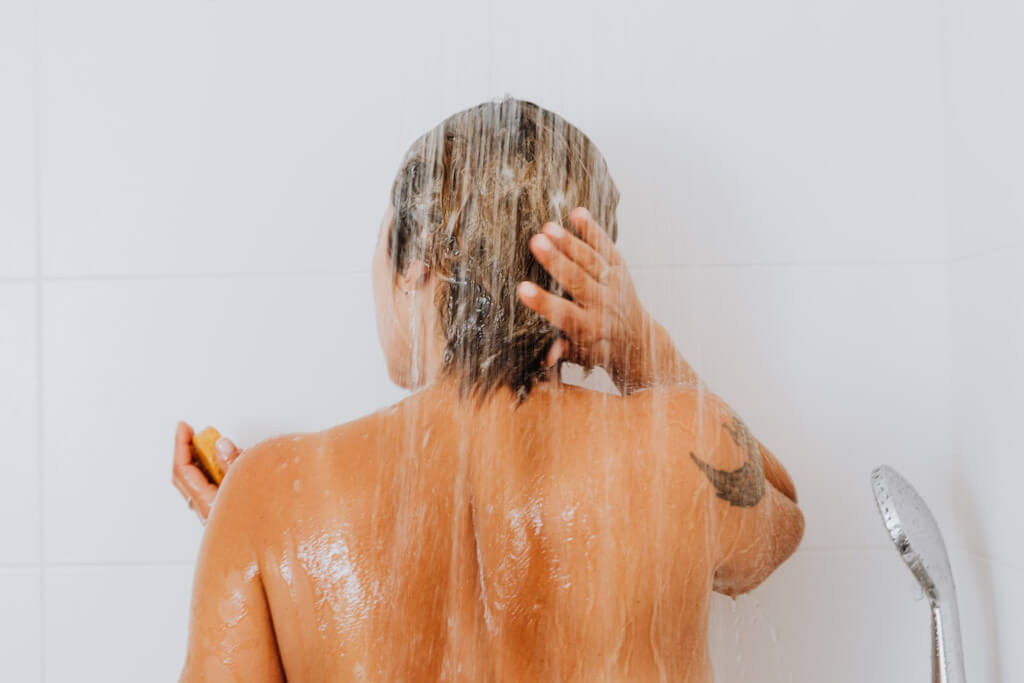Washing your hair with shampoo and then conditioning it afterward is the most fundamental step in any hair care routine. Although both products can address a variety of hair concerns, including hydration, shine, and others, how they work on your strands of hair is distinct. In this section, we will discuss the primary distinction between shampoo and conditioner, as well as the function that each haircare product serves in the process of achieving long-term benefits for your hair and its overall health.
What Exactly is the Function of Shampoo?
The primary objective of every kind of shampoo is to clean the scalp as well as the hair. There are several varieties of shampoo, each one designed to treat a specific problem with a different aspect of hair care. The following are some of the many types of shampoos:
- Volumizing shampoos
- Hydrating shampoos
- Shampoos that are clarifying
- Frizz-combatting shampoos
- Shampoos that encourage curl formation
- Shampoos in dry form
As a result of the malleability and adaptability of hair, it is not unusual to observe the progression of your hair through a variety of phases throughout your lifetime. Because your hormones, the environment, and other factors can all have an impact on the health of your hair, you may find that you need more than one kind of shampoo in your medicine cabinet to accommodate the various needs of your mane.
What Exactly is the Function of the Conditioner?
The purpose of the conditioner is to condition the hair by providing the hair shaft with hydration and strengthening it. Utilizing a hair conditioner can support improvements in the following areas:
- Hair cuticle integrity
- Softness
- Both in volume and mass
- Silkiness and a lustrous sheen
The Primary Distinctions Between Shampoo and Conditioner
The primary distinction between shampoo and conditioner is that shampoo is intended to remove dirt and debris from the hair, while the conditioner is formulated to provide nourishment that, when applied to freshly washed hair, can make it easier to manage and feel smoother. The following are some additional distinguishing features between the two:
The Difference In Lather
One of the most glaringly obvious ways to differentiate between shampoo and conditioner is by examining the lather that each product produces. When combined with water, the majority of shampoos produce a degree of lather. Conditioner, on the other hand, should leave the hair feeling silkier and should have a slip that makes it easier to detangle the hair once you get out of the shower.
The shampoo is Applied First
When it comes to timing, shampoo is typically applied first, followed by conditioner, to get the hair ready for being hydrated by the conditioner. On the other hand, some individuals claim that reversing the order in which they apply shampoo and conditioner helps revitalize their hair.
Components
The foam that is generated by shampoo is the result of surfactants, a type of chemical that binds to both oil and water to wash away grime and other particles that have accumulated on the hair. The conditioner uses larger surfactants than the shampoo. As a consequence of this, they are resistant to being removed by rinsing, which allows hydrating molecules to coat and smooth the cuticle and the strand of hair.
Sulfate Levels
The majority of shampoo recipes call for the use of sulfates as a type of surfactant. Sulfates are renowned for being a heavy-duty detergent that can deprive your hair of the organic oil it requires to remain hydrated and malleable inside and out. However, there has not been a final general agreement reached on the hazardous properties of sulfates. If you want to keep your hair from becoming overworked, brittle, or dry, make sure that the shampoo and conditioner you use do not contain any sulfates (SLS or SLES).
The Advantages of Shampoo in Comparison to Conditioner
There are a variety of advantages associated with using shampoo and conditioner, and ideally, you should incorporate both of these products into your routine for caring for your hair, regardless of how frequently you wash your hair.
Purification
It doesn’t matter what type of hair you have; your overall health needs to cleanse your scalp and hair strands properly. If you don’t properly clean your hair, you might end up with greasiness, dandruff, unpleasant odors, and a buildup of dirt and other pollutants that your hair has absorbed from the surrounding environment. Having said that, the frequency with which you should wash your hair differs according to the type of hair that you have. In most cases, individuals with straight, thin hair should wash it more frequently than those with wavy, coiled, or otherwise textured hair.
Nourishment of The Scalp
A healthy scalp is a foundation for healthy hair, and using a mild shampoo is the best way to ensure that your scalp receives the care it requires. Your sebaceous glands will produce less oil if they are encouraged to produce less oil by keeping the scalp clean of oil, dirt, and other debris. This will allow your hair to go longer without needing to be washed.
Improvements to the Condition of the Hair
Every type of hair, for its natural hair texture to be able to shine through, needs to be cleaned. Not only will maintaining a regular shampoo routine keep your hair healthy, but it will also prepare your hair to absorb the nutrients from any additional haircare products that you may choose to include in your routine.
Advantages of Using a Conditioner
- Improves the texture and luster of the hair by smoothing the cuticle.
- This can lead to an improvement in the overall condition of the hair over time
- When the hair is wet, it acts as a primer and protects it, allowing for easier detangling and styling.
- If you want your hair to stay hydrated after you shampoo it, having an adequate moisturizing agent on hand is essential. This is true whether you condition your hair in the shower or use leave-in solutions on damp or dry hair. Shop for our most effective shampoos and conditioners for your hair by going to the Health on Point page.

